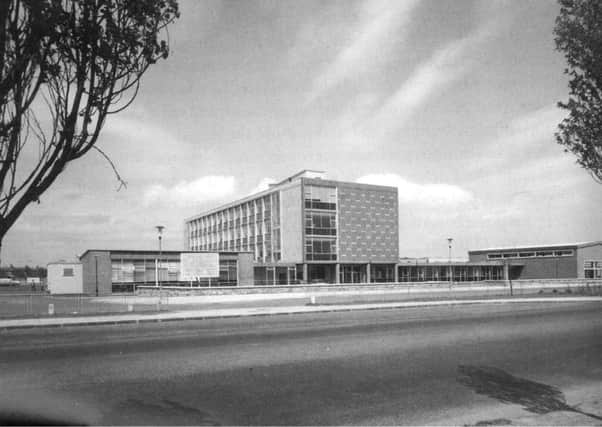Laying the foundations of a new educational era


Back in 1962 it was considered a modern marvel offering state of the art facilities to thousands of apprentices, technicians, management trainees and many others looking for the life and employment opportunities offered by education beyond school.
They were the lucky ones to benefit from the new ideas on education and training to emerge in the aftermath of the Second World War as those in power began to realise that a better trained workforce was a key requirement for the new post war world.
Advertisement
Hide AdAdvertisement
Hide AdIn Falkirk it all began with the building trades. Skilled tradesmen were required to tackle the backlog of house building and Stirling County Council decided to purchase the old ‘poors house’ where Comely Park School stands today and converted it into the County Trades School.
This grim old building which cost £5000 dated back to 1850 and had been the ‘asylum for lunatic paupers’ a fact not missed by the teachers recruited to train a new intake of bricklayers, plasterers, joiners, plumbers and painters!
It opened in September 1944 and was an immediate success with enthusiastic support from employers. Other non-building trades were added in the following years including motor vehicle engineering, welding and even baking.
Mining was still a major employer and it was the next to get the modern treatment. The old 1846 Grammar School of Falkirk in Park Street was developed as the County Mining Institute in 1947 with over 500 students attending day release classes each week in mining electrical and mechanical engineering as well as related subjects like machine shop practice, draughtsmanship and electrical installation.
Advertisement
Hide AdAdvertisement
Hide AdIn 1950 the old Primary School in Blackbraes, five miles south of the town, became the third centre offering training in subjects not usually covered by traditional apprenticeships.
The emphasis was on improving general education to support on-the- job training and included subjects thought ‘appropriate’ for girls like secretarial studies, retail and cookery.
Girls from Nobel’s Explosive works in Redding and the many Co-ops were joined by police cadets who were sent to learn how to type and prepare for their police exams! As a further sign of the times there were new day release classes for radio and TV mechanics.
Every weekday two buses left from Callendar Riggs to take students ‘up the braes’.
Advertisement
Hide AdAdvertisement
Hide AdThe final initiative should probably have been the first because in the late 1940s the iron industry was still the major employer all across the district with 30 odd foundries employing hundreds of moulders, pattern makers, fitters and the rest.
However the employers proved the toughest nut to crack. They were reluctant to lose a boy for a day each week and it took a lot of hard negotiation before the fourth centre, the Foundry Trades Centre, opened in the former Burnbank Foundry in Bainsford in 1952.
Here the apprentices were given instruction in science, mathematics and technical drawing related to their trade.
The four centres were such success that thoughts turned to the idea of a large integrated Technical College like the ones springing up all over England.
Advertisement
Hide AdAdvertisement
Hide AdBy the mid-1950s the decision was taken to press ahead and the £1million college next door to the ice rink was the result.
By 1962 it was ready and the staff and students moved into top class facilities while the old centres awaited a new role or a date with the bulldozers.